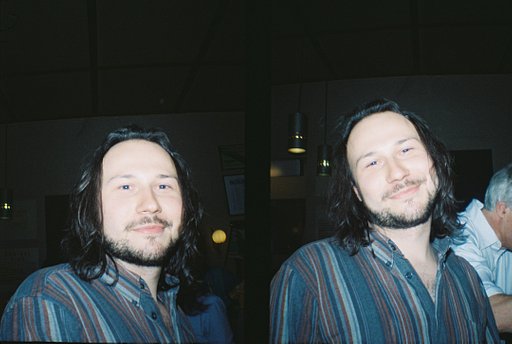What is B&W negative film?
This is by far the most common type of black and white film, and it works in much the same way as color negative film. Essentially, all the areas that appear lightest on the negative will be dark on the final print and all dark areas of the negative will show light on the print.

Most black and white negative films are made of three layers. First, there is a light-sensitive emulsion layer. The emulsion contains silver grains that are able to absorb light and react with a developing chemical to reveal an image on the negative. Second is a layer of plastic to support the emulsion. The third layer is an anti-halation that is used to capture light and stop it from bouncing back to the emulsion. This final layer prevents blurry or foggy images.
At Lomography we manufacture several different black and white negative films, including our beautiful Kino B&W family, each with their own unique features and qualities.
Black and white negative film is generally more expensive to get developed at a lab than color negative film. This is because unlike color negative, black and white processing is not as standardized. Each film requires different developing times and different chemicals.
On the flip side black and white film is substantially easier to self develop at home than color negative film as it tends to be a lot more flexible when it comes to temperatures and timings.
Anything missing?
Can’t find an answer to your question? Or do you have some useful advice to add to one of our courses? We want to build the world’s largest analogue learning space, so please send any further requests or information to school@lomography.com and we’ll take a look!
More Courses
-
What are the different photographic film formats?
The three main types of film format are 35 mm, medium format and large format. More unusual formats also exist such as 110 and 127.
-
What is tungsten film?
Most standard films are daylight-balanced, so they tend to capture the yellow-orange cast from tungsten lights. To address this, tungsten film was created to produce color-correct images taken under artificial lighting.
-
What is 126 film?
126 film was launched by Kodak in 1963 as a way to simplify the process of loading and unloading film into cameras. Its name comes from the negatives’ dimension of 26.5 mm square. Although companies ceased mass production of 126 format around 2007 to 2008, its cartridge is still known and loved today.
-
What is APS film?
Advanced Photo System or APS film was introduced in 1996 as a “high-tech” or modern alternative to the 126 and 110 film formats. It was 24 mm wide and it introduced many innovations, like the ability to choose exposure lengths and print sizes. Production of new APS film was ceased in 2011.
-
What is the difference between panchromatic and orthochromatic film?
Orthochromatic film is made with blue-sensitive silver halide crystals, while panchromatic film adds other chemicals to increase the film’s sensitivity into the green and red parts of the spectrum.
-
What is a half-frame film camera?
Half-frame cameras shoot 18×24 mm photographs on 35 mm film. This means you can take up to 72 images on one single roll and save a lot of film!
-
What are LomoChrome films?
LomoChrome is the name given to Lomography’s experimental film stocks. There are currently four LomoChrome film stocks available: LomoChrome Purple, LomoChrome Turquoise, LomoChrome Metropolis, and LomoChrome Color ‘92.
-
Where to get film developed?
There are a lot of places that can process and develop your 35 mm color negative film such as local drugstores or one-hour photo labs.
-
What is the processing method for Redscale and LomoChrome films?
All Lomography color films are processed using C-41 chemicals. This includes Lomography RedScale XR and our popular range of color-shifting LomoChrome films – LomoChrome Purple, LomoChrome Metropolis and LomoChrome Turquoise





